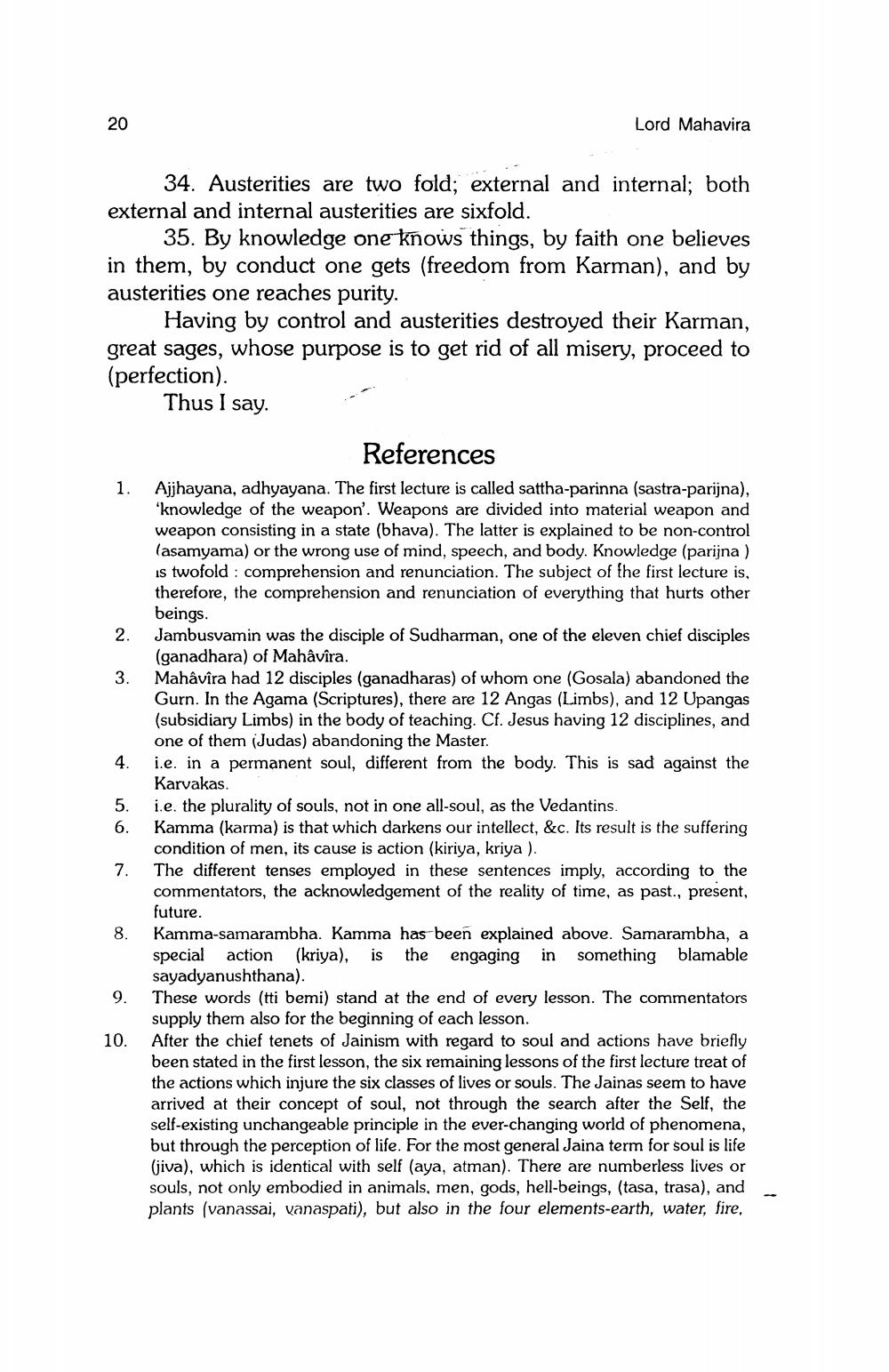________________
20
Lord Mahavira
34. Austerities are two fold; external and internal; both external and internal austerities are sixfold.
35. By knowledge one knows things, by faith one believes in them, by conduct one gets (freedom from Karman), and by austerities one reaches purity.
Having by control and austerities destroyed their Karman, great sages, whose purpose is to get rid of all misery, proceed to (perfection).
Thus I say.
References
1.
5.
Ajjhayana, adhyayana. The first lecture is called sattha-parinna (sastra-parijna),
knowledge of the weapon'. Weapons are divided into material weapon and weapon consisting in a state (bhava). The latter is explained to be non-control (asamyama) or the wrong use of mind, speech, and body. Knowledge (parijna) is twofold: comprehension and renunciation. The subject of the first lecture is, therefore, the comprehension and renunciation of everything that hurts other beings. Jambusvamin was the disciple of Sudharman, one of the eleven chief disciples (ganadhara) of Mahâvîra. Mahâvîra had 12 disciples (ganadharas) of whom one (Gosala) abandoned the Gurn. In the Agama (Scriptures), there are 12 Angas (Limbs), and 12 Upangas (subsidiary Limbs) in the body of teaching. Cf. Jesus having 12 disciplines, and one of them (Judas) abandoning the Master. i.e. in a permanent soul, different from the body. This is sad against the Karvakas. i.e. the plurality of souls, not in one all-soul, as the Vedantins. Kamma (karma) is that which darkens our intellect, &c. Its result is the suffering condition of men, its cause is action (kiriya, kriya ). The different tenses employed in these sentences imply, according to the commentators, the acknowledgement of the reality of time, as past., present, future. Kamma-samarambha. Kamma has been explained above. Samarambha, a special action (kriya), is the engaging in something blamable sayadyanushthana). These words (tti bemi) stand at the end of every lesson. The commentators supply them also for the beginning of each lesson. After the chief tenets of Jainism with regard to soul and actions have briefly been stated in the first lesson, the six remaining lessons of the first lecture treat of the actions which injure the six classes of lives or souls. The Jainas seem to have arrived at their concept of soul, not through the search after the Self, the self-existing unchangeable principle in the ever-changing world of phenomena, but through the perception of life. For the most general Jaina term for soul is life (jiva), which is identical with self (aya, atman). There are numberless lives or souls, not only embodied in animals, men, gods, hell-beings, (tasa, trasa), and plants (vanassai, vanaspati), but also in the four elements-earth, water, fire,




